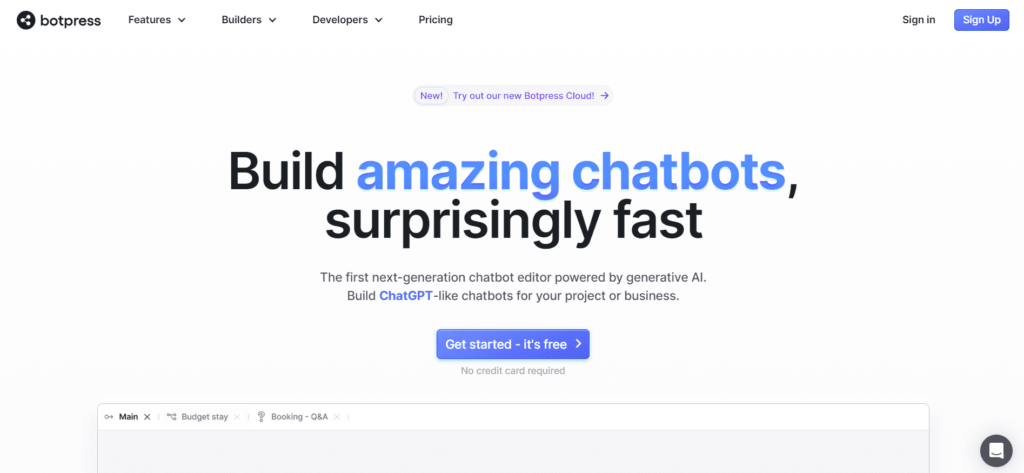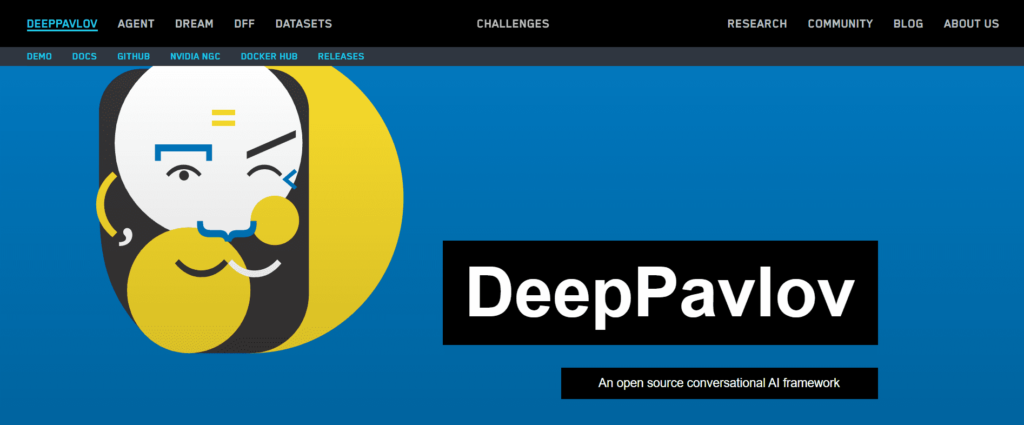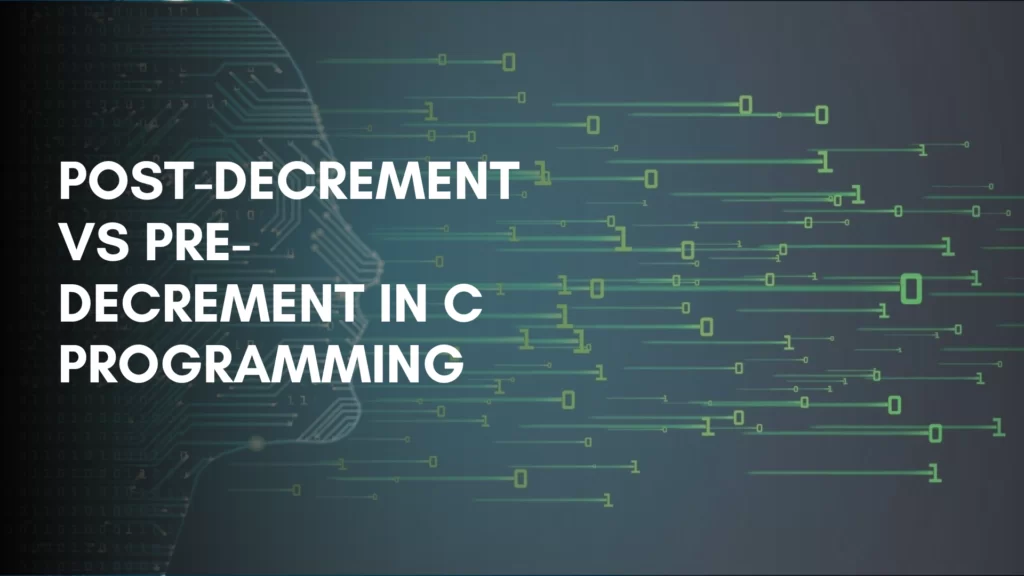Have you noticed how prevalent chatbots have become in recent years? Every industry, from healthcare to customer service, appears to be utilizing them. But if you’re not familiar with the field, the possibility of making your own chatbot can seem daunting. The profitable news is that you don’t have to start from scratch.
There are multiple open source chatbot projects out there that can help you make a more intelligent and effective chatbot. In this article, we’ll explore the top five open source chatbot projects with AI that you can use to create your very own chatbot.
Table of Contents
ToggleIntroduction
With the ability to automate tasks like customer service and marketing, chatbots have grown to be a crucial tool for businesses and organizations.
Additionally, open source frameworks have proven to be very successful when it comes to building chatbots.
Developers can design chatbots that are tailored to the unique needs of their community using free and adaptable resources. But that’s not all, the addition of artificial intelligence (AI) has elevated chatbots to a new level.
Chatbots can now comprehend natural language and give more precise answers to user queries thanks to AI technology.
It’s evident that chatbots and AI will keep playing a significant role in determining the direction of business automation in the future.
Read also:- Best 10 Effective Tips for increasing coding productivity
Top 5 Open Source Chatbot Projects with AI
Here are the top 5 open source chatbot projects with AI that you can use to build your next chatbot:
1. Rasa
Rasa is an open source chatbot development framework that employs machine learning to create chatbots that are intelligent and conversant. With its advanced natural language processing capabilities, Rasa can help developers create chatbots that can understand human language and context, and respond accordingly.

- Rasa’s advanced natural language processing capabilities enable chatbots to understand human language and context and respond accordingly.
- Rasa’s machine learning-based dialogue management system enables chatbots to engage in natural and dynamic conversations with users, even in complex use cases.
- Rasa provides pre-built components, including natural language understanding (NLU) models and a customizable dialogue management system, to help developers build chatbots more efficiently.
- Rasa is highly customizable and can be integrated with various tools and platforms, making it flexible and adaptable to different chatbot applications.
- With Rasa, developers can create chatbots that operate across different channels, such as websites, messaging platforms, and voice assistants, providing a consistent user experience.
| Pros | Cons |
|---|---|
| 1. Rasa is open-source and free to use, making it accessible to developers with limited budgets. | It requires a high level of technical know-how to configure and operate efficiently. |
| 2. Rasa’s machine learning-based dialogue management system enables chatbots to handle complex conversations and understand user intent. | For inexperienced users, navigating Rasa’s documentation and community support can be difficult. |
| 3. To aid developers in creating chatbots more quickly, Rasa offers pre-built components like natural language understanding (NLU) models and a dialogue management system | The quality and quantity of training data available to the chatbot may constrain Rasa’s performance. |
| 4. Rasa is flexible and adaptable to different chatbot applications because it is highly customizable and can be integrated with a variety of tools and platforms | Rasa’s models might need frequent updates to keep up with changing user behavior and linguistic trends. |
| 5. Rasa can function on a variety of platforms, including websites, messaging services, and voice assistants, offering a consistent user experience. | Rasa’s NLP capabilities might not be as sophisticated as those of some exclusive chatbot development platforms. |
Overall, Rasa provides a robust platform for chatbot development but requires technical expertise and ongoing maintenance to ensure optimal performance. The platform is desirable for developers looking to create highly customized and adaptable chatbots due to its flexibility and open-source nature.
2. Botpress
Botpress is an open source chatbot development framework that offers advanced natural language processing and machine learning capabilities.

Here are some key features of Botpress:
- Botpress uses AI to enable chatbots to understand and respond to user queries, improving the accuracy and effectiveness of chatbot interactions.
- Botpress offers a visual interface that allows developers to create chatbots with minimal coding, streamlining the development process.
- Botpress supports multiple languages, making it a versatile option for creating chatbots for a global audience.
- For a consistent user experience across channels, Botpress can be used to create chatbots for a variety of platforms, such as websites, mobile apps, and messaging platforms.
- Botpress can be highly customized and adapted to various use cases because it integrates with a variety of tools and platforms.
| Pros | Cons |
|---|---|
| 1. It provides cutting-edge natural language processing and machine learning capabilities, allowing chatbots to comprehend user inquiries better. | For developers with little technical experience, especially when working with more complicated chatbot applications, it can be less user-friendly. |
| 2. It streamlines the development process by providing a visual interface that enables developers to quickly create chatbots with little coding. | Its documentation and user community may be less developed and trickier to use than those of other chatbot development frameworks. |
| 3. It is a flexible choice for building chatbots for an international audience because it supports multiple languages | Its capacity to handle more complex use cases might be constrained by its lack of customization compared to other chatbot development frameworks. |
| 4. A consistent user experience can be offered by chatbots built with Botpress for a variety of platforms and channels. | Botpress’s machine learning and natural language processing tools might need a sizable amount of training data to function properly. |
| 5. It is very adaptable to various use cases because it integrates with a variety of tools and platforms. | Compared to other chatbot development frameworks, Botpress might not provide as many pre-built components, necessitating more custom development work. |
Moreover, Botpress offers a strong platform for chatbot development with cutting-edge machine learning and natural language processing capabilities.
3. ChatterBot
ChatterBot is a popular open-source chatbot development framework built with Python. Using machine learning algorithms, ChatterBot can enable chatbots to understand and respond to user queries in a natural language format.

Some key features of ChatterBot include:
- Support for multiple languages and data sources, including training data from text files, websites, and databases.
- Flexible and customizable to fit the needs of different chatbot applications.
- ChatterBot also has a strong and active community of developers and users, making it easy to get support and find resources.
- For developers to create and test their chatbots, it has an easy-to-use interface.
- integration with a variety of messaging platforms, including Slack, Facebook, and Twitter.
| 1. ChatterBot is open source and free to use, making it accessible to developers with limited budgets. | ChatterBot’s machine learning capabilities are not as advanced as some other chatbot development platforms. |
| 2. It can be completely customized and integrated with a type of messaging service, such as Slack, Facebook, and Twitter. | It may require significant training data to ensure accurate responses, which can be time-consuming to acquire. |
| 3. Its flexible architecture allows developers to create chatbots for a range of applications, including customer support, marketing, and entertainment. | Its documentation and community support may not be as extensive as some other open-source chatbot development platforms. |
| 4. It is easy to use, with a simple and intuitive interface for developers to build and test their chatbots. | The quality and quantity of training data available for the chatbot can limit its performance. |
| 5. It has a strong and active community of developers and users, making it easy to get support and find resources. | It may not be as suitable for highly complex chatbot applications as some proprietary chatbot development platforms. |
4. Dialogflow
Dialogflow is a powerful chatbot development framework that offers a range of features to enable developers to create AI-powered chatbots.

Here are some key points about Dialogflow:
- Dialogflow, previously known as API.ai, is owned by Google, making it a reliable and trusted platform for chatbot development.
- The platform provides natural language processing (NLP) capabilities, which enable chatbots to understand and respond to user queries in a variety of languages.
- Dialogflow also offers machine learning and speech recognition features, allowing chatbots to learn from user inputs and provide personalized responses.
- The platform provides a range of pre-built integrations with popular messaging platforms, such as Facebook Messenger and Slack, making it easy for developers to deploy their chatbots to these channels.
- Dialogflow also provides a range of tools for testing and debugging chatbots, including a chat simulator and analytics dashboard.
- While the platform is user-friendly, it may require some technical expertise to set up and customize advanced features.
| Pros | Cons |
|---|---|
| 1. Dialogflow is owned by Google, making it a reliable and trustworthy platform for chatbot development. | The platform may require some technical expertise to set up and customize advanced features. |
| 2. Dialogflow provides natural language processing (NLP) capabilities, allowing chatbots to understand and respond to user queries in a variety of languages. | The free version of Dialogflow has limitations on the number of requests and data storage, which can limit scalability. |
| 3. Dialogflow offers machine learning and speech recognition features, enabling chatbots to learn from user inputs and provide personalized responses. | The platform’s integrations with messaging platforms may be limited, requiring additional development efforts to deploy to new channels. |
| 4. Dialogflow provides a range of pre-built integrations with popular messaging platforms, such as Facebook Messenger and Slack, making it easy for developers to deploy their chatbots to these channels. | The platform’s documentation and community support can be challenging to navigate for novice users. |
| 5. Dialogflow provides a range of tools for testing and debugging chatbots, including a chat simulator and analytics dashboard. | The platform’s pricing can be expensive for high-volume chatbot use cases. |
Overall, Dialogflow is a powerful chatbot development platform that provides a range of features to enable developers to create intelligent and sophisticated chatbots. While it may require some technical expertise to use effectively, its natural language processing and machine-learning capabilities make it a popular choice for chatbot development. However, its pricing and limitations on the free version may be a barrier for some developers.
5. DeepPavlov
DeepPavlov is an open-source chatbot development framework that provides AI capabilities for building conversational agents. It uses natural language understanding and machine learning to enable chatbots to understand user intents and respond with appropriate actions.

Here are some key features of DeepPavlov:
- DeepPavlov is an open source chatbot framework that offers AI capabilities for building conversational agents.
- It uses natural language understanding and machine learning to enable chatbots to understand user intents and respond with appropriate actions.
- DeepPavlov can be used to build chatbots for a variety of platforms, including websites and messaging platforms.
- DeepPavlov provides pre-built natural language understanding (NLU) models that can be customized to fit different chatbot applications.
- DeepPavlov can be integrated with other machine learning frameworks and tools, such as TensorFlow and Keras.
- DeepPavlov offers support for multiple languages, making it a versatile option for building chatbots for a global audience.
| Pros | Cons |
|---|---|
| 1. DeepPavlov is open-source and free to use, making it accessible to developers with limited budgets. | DeepPavlov’s documentation and community support can be challenging to navigate for novice users. |
| 2. Its natural language understanding and machine learning capabilities enable chatbots to understand user intents and provide personalized responses. | It may require a significant amount of technical expertise to set up and use effectively. |
| 3. It provides pre-built natural language understanding (NLU) models that can be customized to fit different chatbot applications, reducing the amount of training data required. | the quality and quantity of training data available for the chatbot can limit DeepPavlov’s performance. |
| 4. It can be integrated with other machine learning frameworks and tools, such as TensorFlow and Keras, making it a versatile option for developers. | It models may require frequent updates to maintain their accuracy as user behavior and language change over time. |
| 5. It offers support for multiple languages, making it a versatile option for building chatbots for a global audience. | Its natural language processing capabilities may not be as advanced as some proprietary chatbot development platforms. |
Overall, DeepPavlov provides a powerful platform for chatbot development, with its natural language understanding and machine learning capabilities enabling chatbots to provide personalized responses and handle complex conversations. However, it does require technical expertise and ongoing maintenance to ensure optimal performance. Its open-source nature, support for multiple languages, and integration with other machine-learning frameworks make it an attractive option for developers looking to create highly-customized and adaptable chatbots.
How to Build an AI Chatbot using Open Source
Building an AI chatbot using open source is a multi-step process that involves choosing a chatbot framework, training the chatbot, integrating the chatbot with the desired platform, and deploying the chatbot.
- Choose a Chatbot Framework: The first step in building an AI chatbot is to choose a chatbot framework that meets your specific needs. Consider factors such as the features and capabilities of the framework, ease of use, and compatibility with the desired platform.
- Train the Chatbot: Once you have chosen a chatbot framework, the next step is to train the chatbot to understand and respond to user queries. This involves providing the chatbot with data and training it using machine learning algorithms.
- Integrate the Chatbot with the Desired Platform: After training the chatbot, the next step is to integrate it with the desired platform. This could involve integrating the chatbot with messaging platforms like Facebook Messenger, Slack, or Telegram, or integrating it with a website or mobile app.
- Deploy the Chatbot: The final step in building an AI chatbot is to deploy it. There is a variety of hosting options available, including cloud hosting platforms like Amazon Web Services (AWS) or Microsoft Azure, or self-hosting the chatbot on your own server. Best practices for deployment include testing the chatbot thoroughly, monitoring its performance, and continually updating and improving the chatbot over time.
Conclusion
In conclusion, open source chatbots with AI capabilities offer a powerful and customizable tool for businesses and organizations looking to automate tasks and improve customer service. The top five open source chatbot projects with AI capabilities offer a range of features and capabilities, making it possible to build chatbots for a variety of platforms and use cases. Building an AI chatbot using open source involves choosing a chatbot framework, training the chatbot, integrating it with the desired platform, and deploying it. With the right tools and knowledge, anyone can build an AI chatbot that can provide valuable services to its customers or users.








